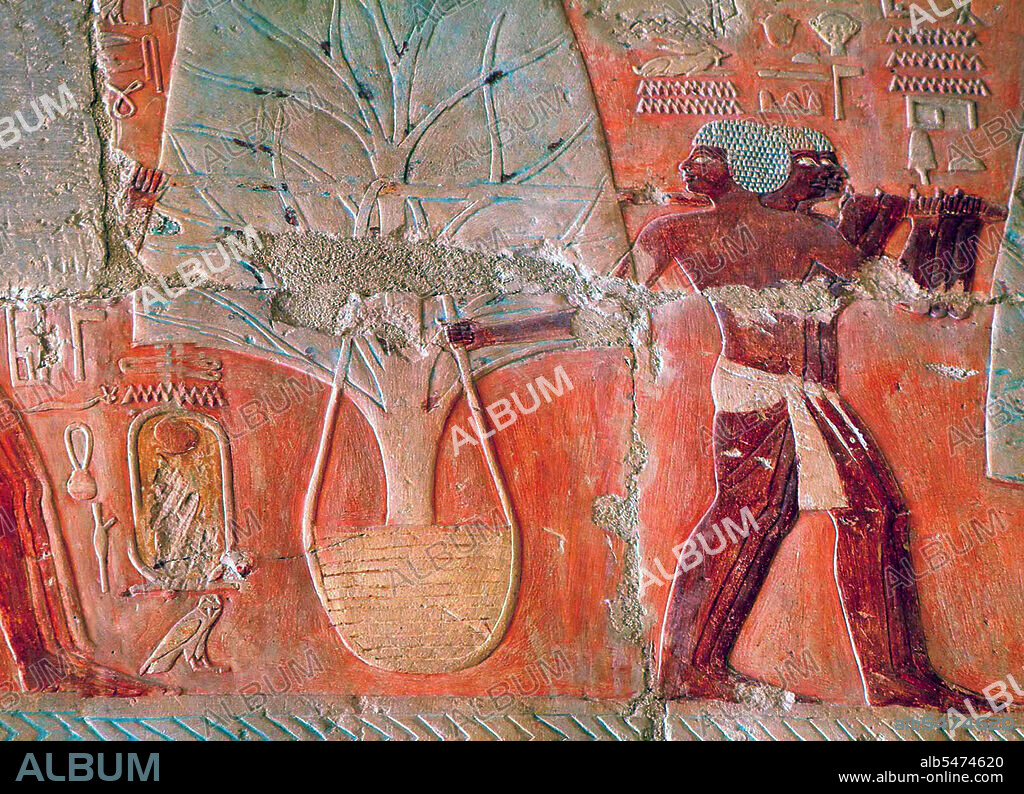alb5474620
Relief depicting myrrh trees carried in a basket by Queen Hatshepsut's expedition to Punt, c. 1480 BC.

|
Ajouter à une autre Lightbox |
|
Ajouter à une autre Lightbox |



Avez-vous déjà un compte? S'identifier
Vous n'avez pas de compte ? S'inscrire
Acheter cette image

Titre:
Relief depicting myrrh trees carried in a basket by Queen Hatshepsut's expedition to Punt, c. 1480 BC.
Légende:
Voir la traduction automatique
Hatshepsut established the trade networks that had been disrupted during the Hyksos occupation of Egypt during the Second Intermediate Period, thereby building the wealth of the eighteenth dynasty. She oversaw the preparations and funding for a mission to the Land of Punt. The expedition set out in her name with five ships, each measuring 70 feet (21 m) long bearing several sails and accommodating 210 men that included sailors and 30 rowers. Many trade goods were bought in Punt, notably myrrh. Most notably, however, the Egyptians returned from the voyage bearing thirty-one live myrrh trees, the roots of which were carefully kept in baskets for the duration of the voyage. This was the first recorded attempt to transplant foreign trees. It is reported that Hatshepsut had these trees planted in the courts of her Deir el Bahri mortuary temple complex. She had the expedition commemorated in relief at Deir el-Bahri, which is also famous for its realistic depiction of the Queen of the Land of Punt, Queen Iti, who appears to have had a genetic trait called steatopygia (a large amount of fat accumulating around the buttocks). Hatshepsut also sent raiding expeditions to Byblos and Sinai shortly after the Punt expedition.
Crédit:
Album / Pictures From History/Universal Images Group
Autorisations:
Modèle: Non - Propriété: Non
Questions sur les droits?
Questions sur les droits?
Taille de l'image:
5000 x 3616 px | 51.7 MB
Taille d'impression:
42.3 x 30.6 cm | 16.7 x 12.1 in (300 dpi)
Mots clés:
ANT. OR.: YEMEN • EGYPTE • ÉGYPTIEN • ÉGYPTIENNE • HISOIRE • HISTOIRE • METIER • REINE • REINES • YEMEN
 Pinterest
Pinterest Twitter
Twitter Facebook
Facebook Copier le lien
Copier le lien Email
Email
